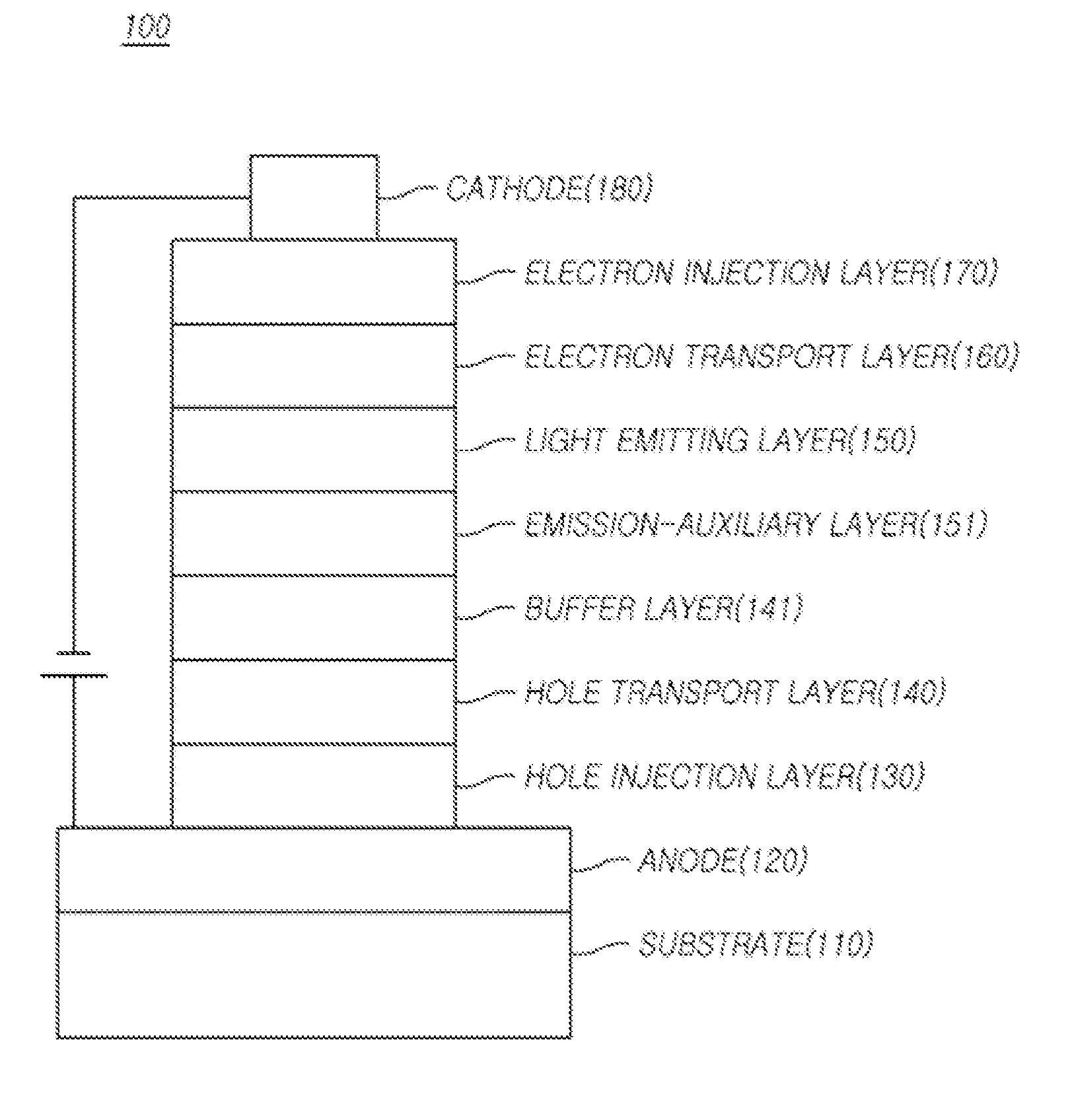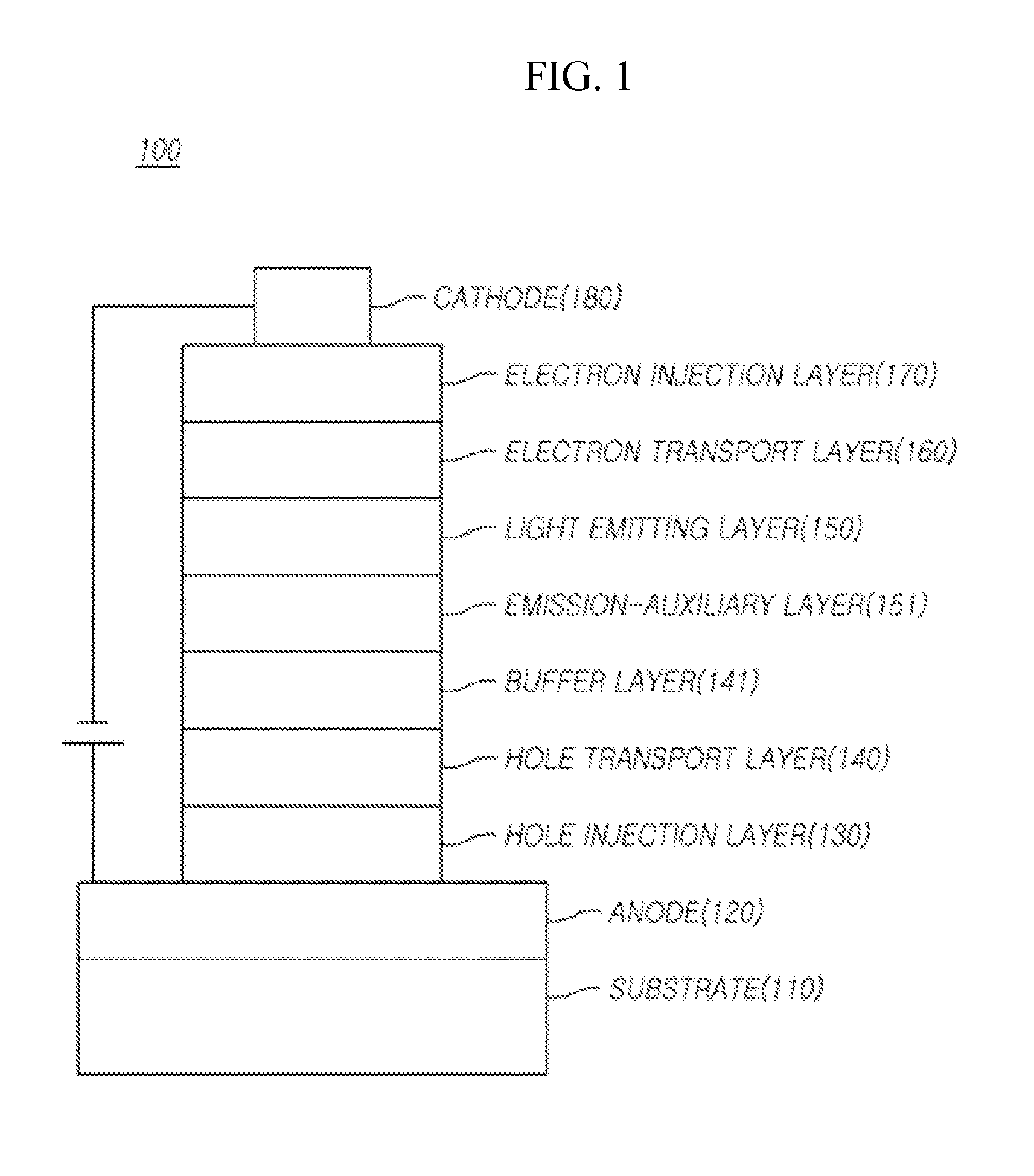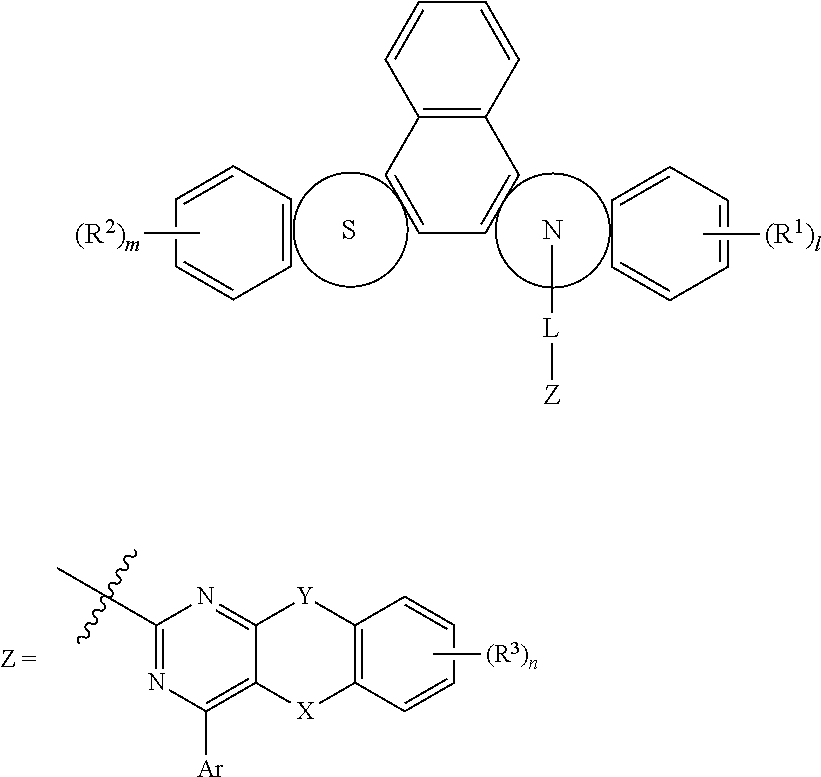Compound for organic electric element, organic electric element comprising the same and electronic device thereof
a technology of organic electric elements and organic electric elements, which is applied in the field of organic electric element compounds, can solve the problems of reducing the efficiency of corresponding elements, reducing the luminescence efficiency, and shifting the maximum luminescence wavelength to a longer wavelength, so as to improve the luminous efficiency, low driving voltage, and the effect of improving the color purity and luminous efficiency
- Summary
- Abstract
- Description
- Claims
- Application Information
AI Technical Summary
Benefits of technology
Problems solved by technology
Method used
Image
Examples
synthesis example
[0084]The final product according to the present invention can be synthesized by reaction between Sub 1 and Sub 2 as illustrated in, but not limited to, the following Reaction Scheme 1.
I. Synthesis of Sub 1
[0085]Sub 1 of Reaction Scheme 1 can be synthesized according to, but not limited to, the following Reaction Scheme 2.
[0086]Synthesis Examples of the compounds of Sub 1 will be described in detail.
1. Sub 1-1 Synthesis
[0087]
(1) 1-1-C1 Synthesis
[0088]To a solution of the starting material 5-bromobenzo[b]naphtha[1,2-d]thiophene (50 g, 0.16 mol), bis(pinacolato)diboron (48.65 g, 0.19 mol), KOAc (47 g, 0.48 mol) and PdCl2(dppf) (5.21 g, 4 mol %) were dissolved in DMF, followed by reflux at 100° C. for 12 hours. Upon completion of the reaction, the temperature of the reaction product was lowered to room temperature, the reaction product was extracted with CH2Cl2, and was washed with water. The extracted organic layer was dried with MgSO4 and concentrated, and then the produced organic m...
PUM
| Property | Measurement | Unit |
|---|---|---|
| thickness | aaaaa | aaaaa |
| thickness | aaaaa | aaaaa |
| thickness | aaaaa | aaaaa |
Abstract
Description
Claims
Application Information
 Login to View More
Login to View More - R&D
- Intellectual Property
- Life Sciences
- Materials
- Tech Scout
- Unparalleled Data Quality
- Higher Quality Content
- 60% Fewer Hallucinations
Browse by: Latest US Patents, China's latest patents, Technical Efficacy Thesaurus, Application Domain, Technology Topic, Popular Technical Reports.
© 2025 PatSnap. All rights reserved.Legal|Privacy policy|Modern Slavery Act Transparency Statement|Sitemap|About US| Contact US: help@patsnap.com



